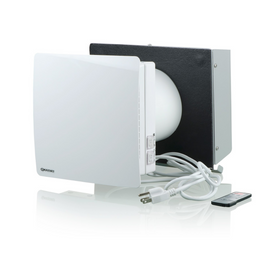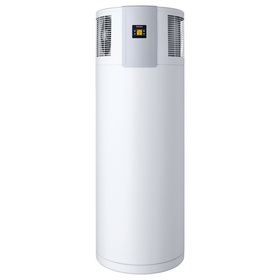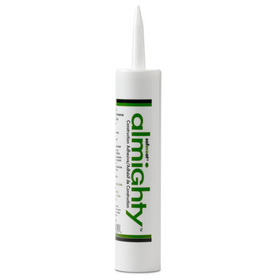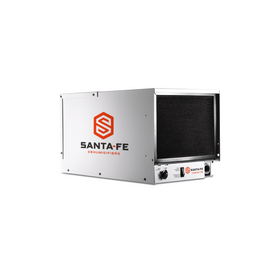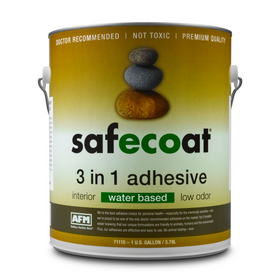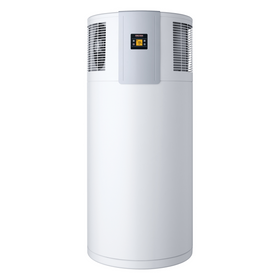
LEED v4.1 for Homes 101: Innovation and Regional Priority
Last Updated: Mar 29, 2025Rise's LEED for Homes series is finally coming to a close. If you've missed anything, we started with this introduction and overview of LEED for Homes. Next, we took you through the six major sections: Location & Transportation, Sustainable Sites, Water Efficiency, two under the Energy category (prerequisites and credits, Materials & Resources, and Indoor Environmental Quality.
This last section, called Innovation and Regional Priority, is a catch-all for those credits that do not logically fit into the previous sections. It's like "all other"—which sometimes can be forgotten. Still, it includes one process-related prerequisite that you do not want to miss, whether or not you are pursuing LEED certification for your house.
Table of Contents
- What Is the Most Important Component of a Sustainable Home?
- Does the LEED Rating System Reward Innovation?
- Does the LEED Rating System Adjust for Regional Differences?
- Do You Have to Have a LEED Accredited Professional on the Team?
- Bottom Line

What Is the Most Important Component of a Sustainable Home?
As the author of Building a Sustainable Home: Practical Green Design Choices for Your Health, Wealth, and Soul, people often ask me, "What's the number one most crucial component of a sustainable home?" They want to press the easy button. Many think if you have solar panels on the roof, and boom, I have a sustainable home. (Though once they get into it, they'll realize putting solar panels on the roof is not the easiest thing!)
My answer is always this: it depends on your values. I value my health the most, so clean water, and clean air are essential pieces for my home. Some people want to make their home climate neutral. Some want to reduce waste. Some want to save the bees, so they focus on their landscaping. There is no right or wrong answer. What's critical is that you decide on your goals early on and communicate those priorities to your design and building team. The sooner and more frequently you do that, the better results you will have.

That's why this section of the LEED for Homes rating system includes the requirement to conduct a preliminary meeting with the entire team to create an action plan. This action plan must identify the following:
- The targeted LEED level (certified, silver, gold, or platinum): If you're not pursuing LEED certification, it's still a good exercise to think about how sustainable you want to make it. What are your goals? What is your budget?
- The LEED credits you are targeting to achieve your goals: Again, even if you're not pursuing LEED certification, it's a good idea to review this blog series on Rise (or the actual LEED credit language online). Doing this will help give you ideas on where you might want to focus your energies and money. I'd recommend pursuing all prerequisites at a minimum.
- The person responsible for meeting these credits: In other words, run it like an actual business meeting and decide who is doing what by when. This process will help minimize misunderstandings and improve the outcome.
According to the credit language, this preliminary meeting is intended to "maximize opportunities for integrative, cost-effective adoption of green design and construction strategies." If you want a more sustainable home, matching your priorities to your values and communicating them to your team is perhaps the most critical starting point.
Does the LEED Rating System Reward Innovation?
Yes, LEED encourages innovation by rewarding projects up to five additional points for pioneering new sustainable strategies that are not addressed in the LEED rating system. I've managed several LEED projects, and eager teams often think they have a new idea that will earn them innovation points. That doesn't always play out; it's a risky bet.

The best way to incorporate more innovative strategies into your project is to review the LEED pilot credit database and the innovation catalog. These can provide a plethora of good ideas and give some assurance that your innovative idea might be approved as a LEED point. Some interesting additions include:
- Create wildlife habitat on at least 50% of your landscape area that achieves certification through the National Wildlife Federation's Certified Wildlife Habitat. To create a wildlife habitat in your yard, you need to have at least three sources of food (such as berries, seeds, bird feeders), one source of water, two places for shelter from weather and predators, and two places for wildlife to mate and raise their young. It also requires sustainable practices: use native plants, reduce the size of your lawn, and eliminate chemical pesticides and fertilizers. Learn more or get certified using this checklist!
- Install a water leak detection and monitoring system. The water sensor should be installed for flush fixtures and irrigation (if applicable). It must have real-time access to the data via an app or local network.
- Use "circular products" for at least five of the permanently installed items in your home. The intent here is to support the circular economy, where no material goes to waste. Finding these products might prove difficult, but look for certifications like cradle-to-cradle, Green Circle's Closed Loop, or Zero Waste to Landfill (see this product database).
- Produce food in your yard. A pilot credit under LEED v4, the minimum size for dedicated food production for a single-family home is 50 square feet / 4.6 square meters. And it can only be 25 percent herbs—the rest needs to be edible vegetables, nut- or fruit-bearing plants. Local food production goes a long way towards health and wellbeing. It is also a great way to educate and involve your kids and community!

Does the LEED Rating System Adjust for Regional Differences?
Here is where I think LEED shines: recognizing that different climates might impact sustainability priorities. For example, if you live in a dry state like Colorado, you might focus more on water efficiency. In areas that get a lot of rain, stormwater management becomes a higher priority. For this reason, the LEED rating system rewards up to four additional points for earning the LEED credits that are more important for your geographical region. The US Green Building Council's (USGBC) regional councils and chapters decide these regional priorities.
It may sound complicated, and sometimes it's hard to find online. But here's a simple interactive Regional Priority credit lookup tool that allows you to enter the address of anywhere in the world. It will tell you which LEED credits are most important to that region. If you seek LEED certification, it's a good idea to identify these regional priority credits early on. Doing this will help you earn more points and prioritize your efforts to have the most impact on your community.
Do You Have to Have a LEED Accredited Professional on the Team?
The short answer is no. You do not have a LEED Accredited Professional (LEED AP) on the team. Your project can earn one point if you do, and that person has to have the specialty appropriate to the project. (This requirement is new to LEED version 4 and later; before this upgrade, the specialty didn't matter.) For example, I have been a LEED AP Homes since 2010. Before the upgrade to LEED v4, I worked on many commercial projects—primarily LEED for Existing Buildings (my favorite LEED rating system). My credential earned us a point, but I would have to prepare for and take the LEED AP Operations + Maintenance exam for future projects. Exam fees can range from $250 to $679, depending on the package you purchase. (Check out the USGBC website if you're interested in this credential!) To find a LEED Accredited Professional by location and specialty, click this directory link.

Bottom Line
While we are currently using LEED version 4.1, LEED will continue to evolve and will undoubtedly come out with a new version within the next few years. Some credits become more stringent, while others are more relaxed. The USGBC collaborates with designers, architects, engineers, building managers, and regional chapters to gather feedback and improve. As the most widely adopted and well-known green building rating system, the LEED rating system raises the bar for more sustainable buildings—and indeed a more sustainable future.
Does LEED go far enough? That's debatable. Buildings have an enormous impact on humans' health and wellbeing and our planet that supports us. We can go further. We know how to make buildings restorative to our environment—it's up to our community and us to do just that, one home and one building at a time.
Note: The header image portrays a LEED Platinum Certified home in Las Vegas, Nevada, courtesy of the USGBC Project Database.
Melissa Rappaport Schifman
Melissa became the Twin Cities’ fifth LEED for Homes Accredited Professional (LEED AP) and completed the work necessary to get her own home LEED Gold Certified, the basis for her book, Building a Sustainable Home: Practical Green Design Choices for Your Health, Wealth, and Soul, (Skyhorse Publishing, August, 2018). With her corporate experience in finance, marketing, and business development, and an MBA and Master’s in Public Policy from the University of Chicago, Melissa has been providing sustainability advisory services to businesses, governmental agencies and non-profits, focusing on strategic and operational change that provide bottom-line financial returns. She has led the LEED certification of two million square feet of commercial buildings, written GRI-compliant Corporate Sustainability Reports, is a LEED Pro Reviewer and LEED mentor with the U.S. Green Building Council. She is the founder of Green Intention LLC where she writes about sustainable home living.

